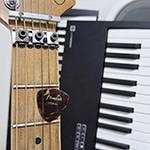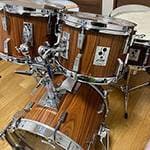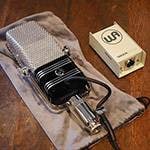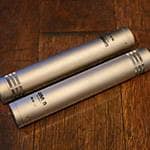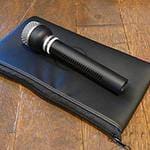Cheena:I recommend reading Part 1 and Part 2 before this article.
⇒ Searching for the Isolated Island of the Great Ocean - Atlansia - Part 1
⇒ Searching for the Isolated Island of the Great Ocean - Atlansia - Part 2
- Part 3 Contents -
- 1 - Atlansia Bridges
- 2 - Sophia & The Century Basses
- 3 - Atlansia Finish
- 4 - Atlansia Pickups - Talk Again
- 5 - Stealth, Pentagone Fortune Basses & Head Designs
- 6 - Atlansia Woodworks
Cheena:So, last time we stopped just before discussing bridges and tremolos.。
Nemoto:That's right. Shall we continue?
Cheena:Most of Atlansia’s bridges are solo bridges, where each string has its own independent unit. Even for guitar tremolos, some designs connect multiple units to a single plate. This setup makes sense given Atlansia’s frequent use of extended-range bass configurations.
Nemoto:There are even models made specifically for the Victoria. That level of dedication is impressive... It’s rare to see designs tailored so precisely to specific models.
Cheena:If I remember correctly, Padalka has made various solo bridges, but original designs were relatively few.
In a way, this is because Atlansia relies heavily on CNC machining, which isn’t ideal for mass production. Compared to casting or sheet metal fabrication, which involve molds and cutouts, CNC machining increases unit costs but makes minor design changes much easier.
Nemoto:That makes sense. If you’re only making around 50 units, setting up a full-scale mass production system might actually cost more.
Since Atlansia offers so many variations, why don’t we each introduce a few of our favorites?
1 - Atlansia Bridges
Cheena:To be honest, I feel like there isn’t much variation here, so I’ll introduce just one and leave the rest to Nemoto... There are still plenty more to cover...
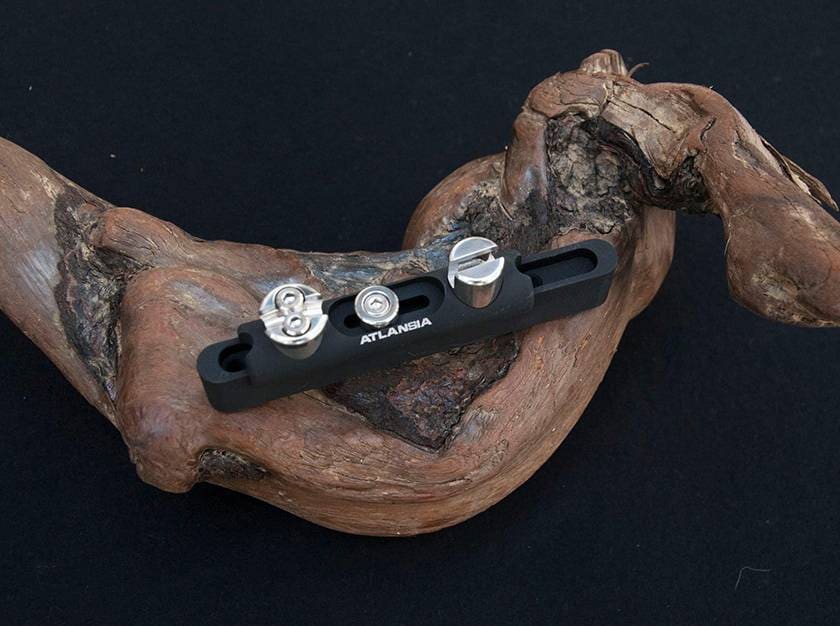
This is the Breeze Tailpiece, designed exclusively for the Sophia Bass. I simply love its intricate mechanical look—it’s just so cool.
Nemoto:First up for me is this one:
ATB-3 Victoria.
It’s the dedicated bridge for the Victoria model.

I really love it. Honestly, that’s the only reason I picked it.
And then there’s this:
ATB-10 Hexer-2.
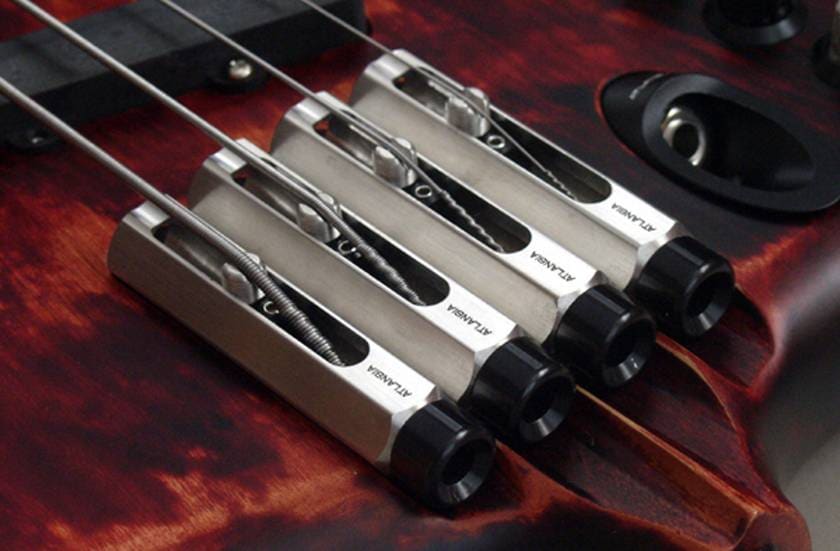
The default string spacing is 18mm, but it can be modified to 14mm through secondary processing. While 15.5mm bridges have been around for a while, 14mm is quite rare.
Cheena:Hexer! As the name suggests, the parts are shaped like hexagonal columns, giving it a really industrial aesthetic. It looks awesome.
Nemoto:I’ve always liked hexagons—they have a futuristic feel. While Atlansia does have non-independent bridges, the independent ones definitely have a stronger presence.
Cheena:When you say non-independent bridges, are you referring to models like the Jupiter? The ones that resemble the Hipshot Style A bridge?
Nemoto:The one with the Hipshot-like feel is the ATB-02.
There’s also an ATB-01.
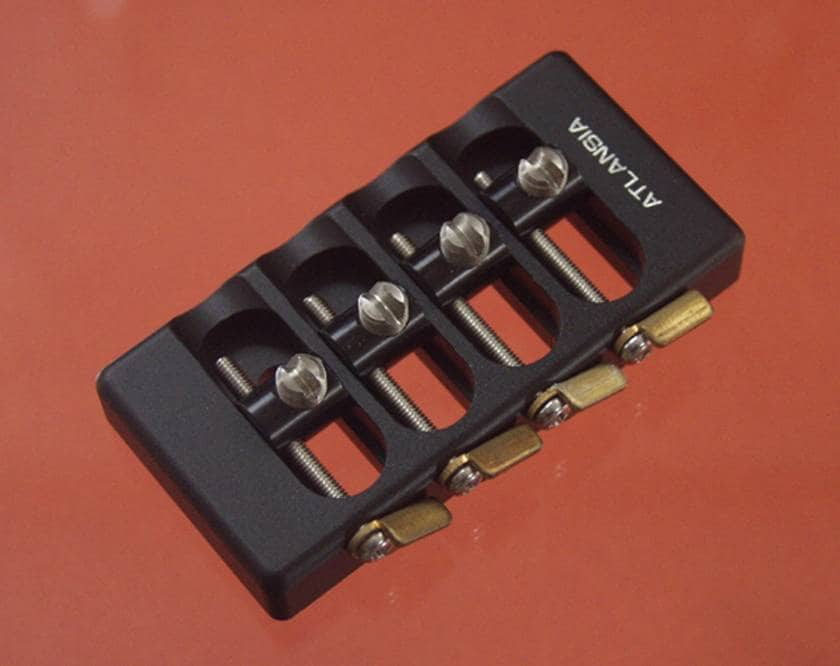
Cheena:Ah, right. In terms of manufacturing efficiency, those seem like solid options.
Nemoto:Another one that caught my attention is this:
ATB-12.
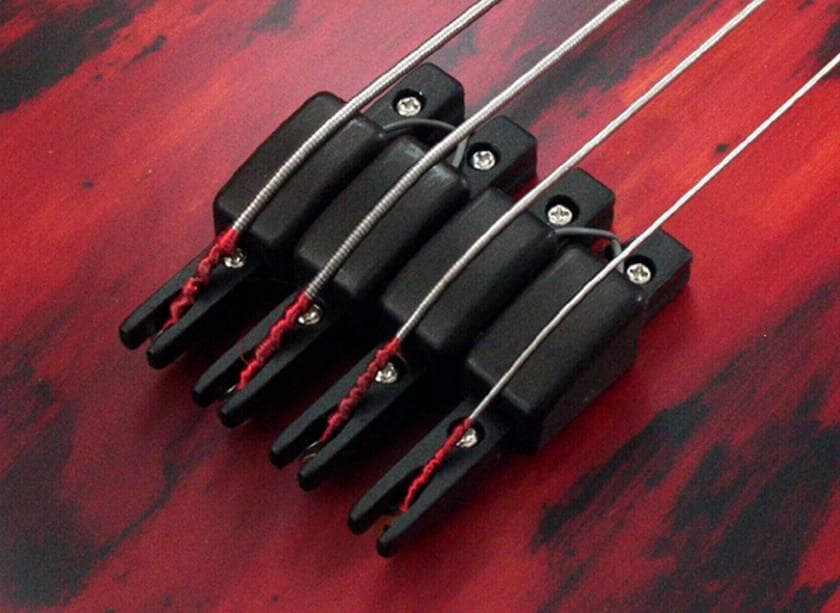
It’s a bridge designed for The Century, featuring a built-in piezo pickup.
The streamlined design is fantastic.
Cheena:Is this a fretless saddle? It looks similar, but I don’t see an angle adjustment mechanism, so I can’t say for sure... Or maybe it’s designed to maximize vibration transfer to the saddle?
*Fretless saddles—A type of saddle that can be adjusted to produce a buzzing sound, mimicking the sound of a fretless bass. Typically made of wood, though metal versions are used in guitars to create a sitar-like effect.
Nemoto:It looks like you can adjust the overall angle by tightening or loosening the bridge mount screws at the front and back. Whether that was intentional or not is another question...
Cheena:Yeah, it’s a bit unclear.
Nemoto:You know how sometimes an unintended feature ends up becoming a defining characteristic? It’s best not to overthink it.
Cheena:Anyway, before we move on, let’s introduce the instruments we just mentioned.
2 - Sophia & The Century Basses
Cheena:The Sophia is currently in the prototype stage. It appears to allow for a high degree of flexibility in playing posture, beyond just the traditional Spanish or classical styles.
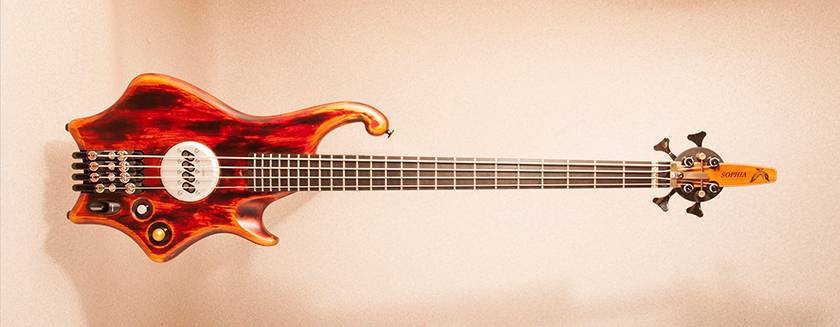
As for The Century, it has a bit of a PE-like essence and is an acoustic bass. Interestingly, its finger rest is attached without drilling any screw holes into the body—it’s referred to as the No.94 Hand Rest. Positioned where the fifth string would be, it allows uniform fingering across all the strings. From the description, it seems to be more than just a simple rest for your fingers—it’s meant to support your hand placement more firmly.
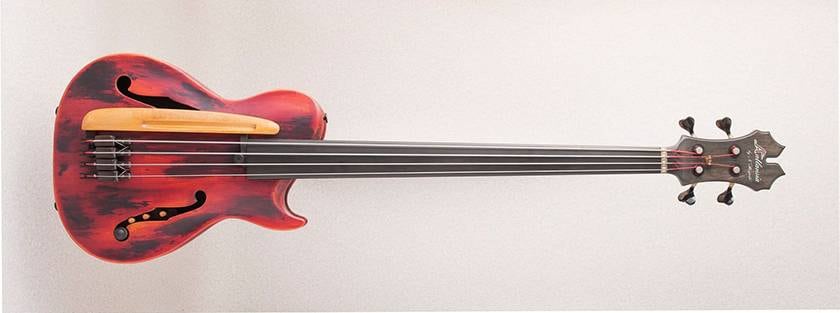
This isn’t directly related to the instrument itself, but The Century has the most inconsistent name formatting among Atlansia’s models. Sometimes ‘The’ is written in all caps, other times it's omitted entirely. For consistency, the heading follows Atlansia’s general naming convention—using all uppercase for instrument names—while treating Century as a proper noun. However, within the text, capitalization is adjusted for readability.
Nemoto:I really like Sophia’s body shape. If it sells for under 600,000 yen, I might just get one... That aside, I have to say, this antique-style finish looks fantastic.
3 - Atlansia Finish
Cheena:No.92, Nostalgic Modernized Finishing... right? The images above seem to be on the redder side of this finishing style. Looking at the patent page P.10, there are also examples where the black tones are much stronger.
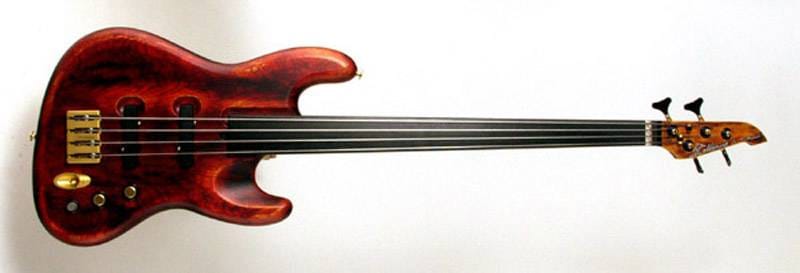
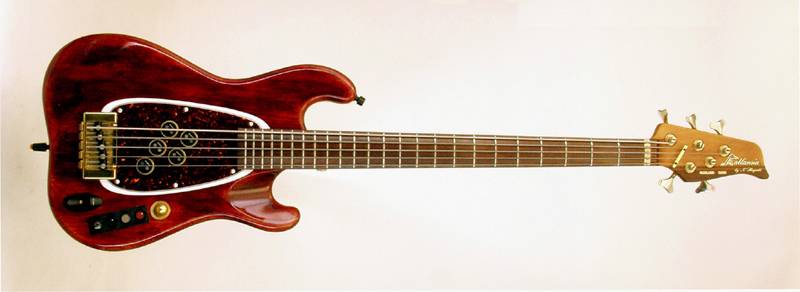
Man, it looks so cool.
Nemoto:Depending on the lighting, it can even appear more brownish. There are solid-color finishes too, but the impression of visible wood grain is much stronger.
Cheena:I found a good reference image.
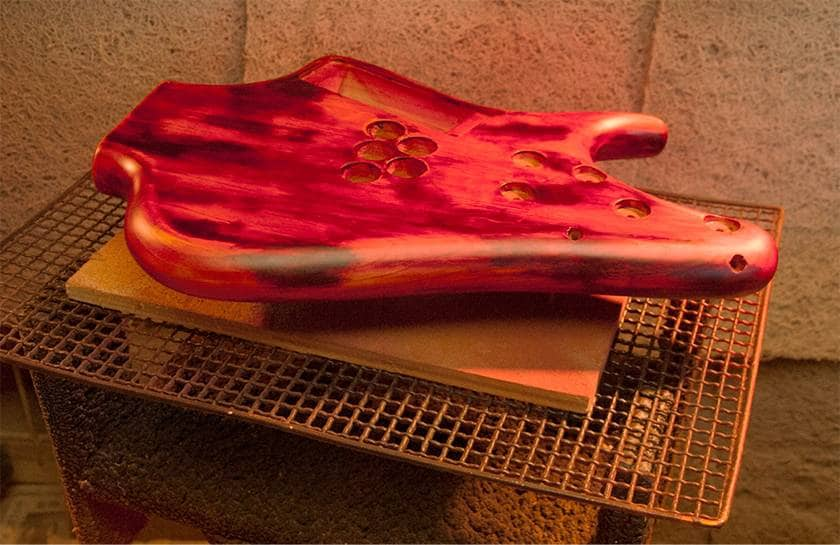
This one shows the wood grain quite clearly. Since it’s the back side, the protrusion at the front is the elbow contour.
Nemoto:It’s really red. Looking at it again, this texture is amazing. Come to think of it, Atlansia has used a lot of transparent red finishes for a long time.
Cheena:Well, it is stylish.
Nemoto:True. That’s reason enough.
Cheena:Alright, shall we move on? What should we cover next?
Nemoto:Hmm, what should we go with... Pickups, maybe?
Cheena:We only touched on them briefly a few sections ago. Let’s do it.
4 - Atlansia Pickups - Talk Again
Cheena:When you think of Atlansia, the first thing that comes to mind is definitely the ARC/ARS pickups! But as we briefly mentioned before, they also make original designs like curved-top soap bars and guitar humbuckers.
Nemoto:They even make piezo pickups. The sound of a piezo can change drastically depending on how it’s mounted—for example, just switching from clipping it onto the bridge to fully adhering it can make a big difference. I wonder what Atlansia’s piezos sound like. Not that I’m not interested in their magnetic pickups too, of course.
Cheena:Atlansia really doesn’t have any official demo or playthrough videos out there. There aren’t many users to begin with, and instead of seeing these instruments being used live, I’d love to hear dedicated sound samples that showcase what they actually sound like.
Nemoto:Yeah, there’s nothing like that... I’d love to see a video where someone plays with the exact same setup except for the bass, just cycling through different models. I’d love to make one myself, but I don’t have the money for it.
Cheena:I’d want it to be as neutral as possible—maybe plugged into a Jazz Chorus using a Nu-Clear Custom Sounds cable or something. At most, just a rack limiter and a bit of overdrive for effects.
Nemoto:The Jazz Chorus is legendary. It’s the only guitar amp I was ever told I could use for bass back when I was doing PA work.
Speaking of which, AR pickups used to be mounted directly onto the body, but now they sometimes come attached to plates, adding even more variety.
Cheena:I’ve also seen more models with levers for rotating the pickup. (ARC pickups allow tonal changes by rotating them, while ARS pickups, being smaller, have this function locked.) And it seems like they’re still experimenting with pole piece placement...
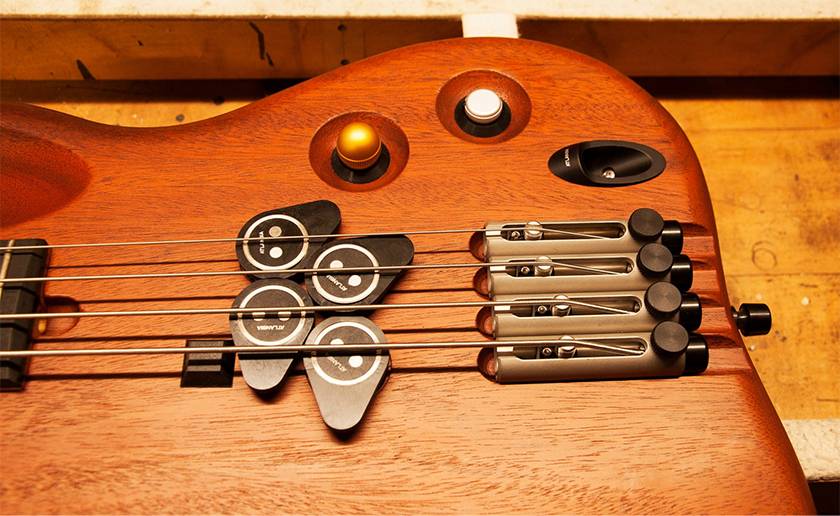
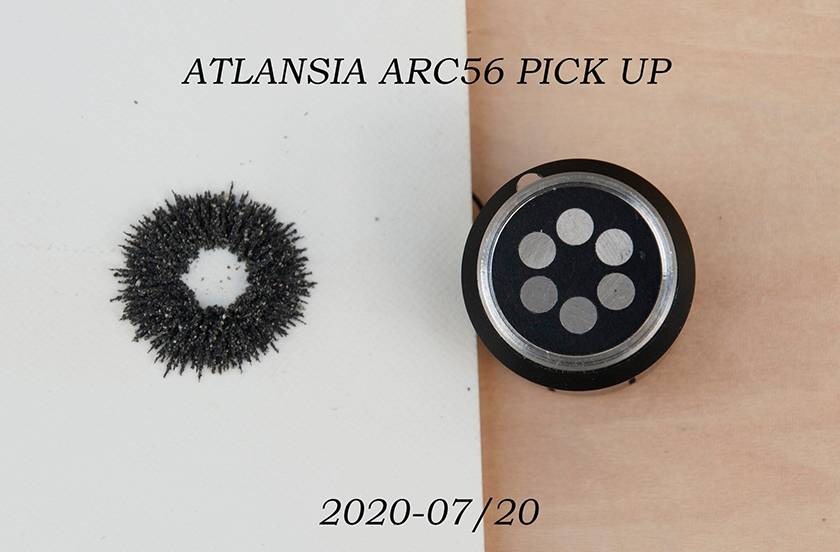
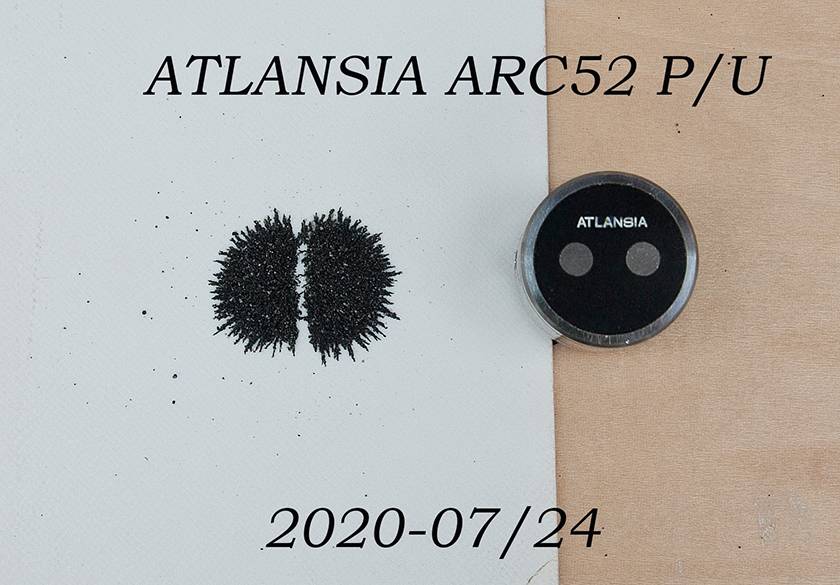
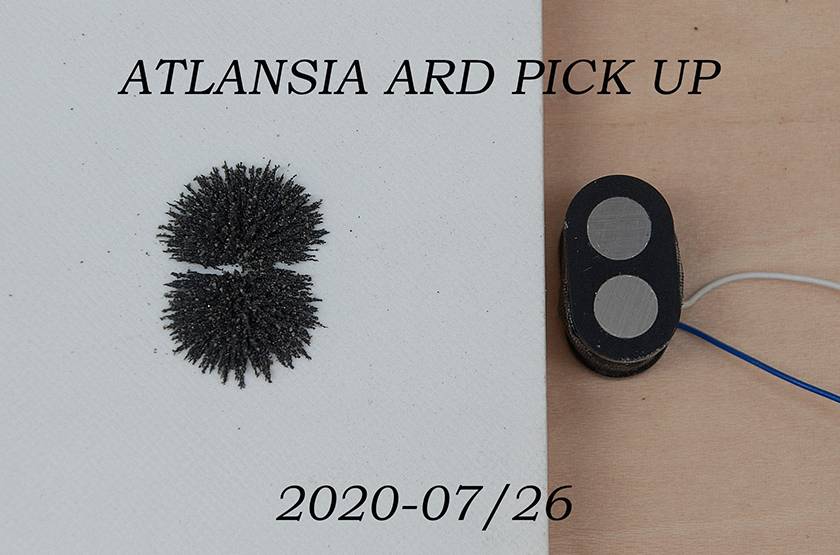
Nemoto:That relentless pursuit of innovation—I could never pull that off. Once I make something that gets solid recognition, I’d probably just keep refining it rather than making entirely new things. Just my personality, I guess.
Cheena:The funny thing is, their idea of a ‘solidly recognized’ product is already way out there. Speaking of the AR series, with just two pole pieces, you’d need to rotate the pickup a full 90° for a significant tonal shift, but with six, you only need to turn it 30°. That makes it both more practical and more visually appealing.
Nemoto:It’s a great design. If they made the pole pieces height-adjustable, that would take it to another level—though I’m not sure if that would actually be useful.
Cheena:If they used something like DiMarzio DP-style pole pieces, that’d be perfect.
Nemoto:The DP123 was a great pickup.
Cheena:On DiMarzio’s official website, you can customize things like cover colors and pole piece plating. If you’re going for a Black Beauty aesthetic, gold pole pieces are the way to go.
Nemoto:I knew you could pick cover colors, but I didn’t realize you could customize the pole pieces too. That’s good to know.
Cheena:The most common look is still black, though.
So, what’s next? There are still some instrument designs we haven’t introduced—should we cover those?
Nemoto:Let’s do it.
5 - Stealth, Pentagone Fortune Basses & Head Designs
Cheena:Stealth, Pentagone, and Fortune—all of them have incredibly skinny headstocks. Stealth, which has a design similar to Victoria and Concord, has been produced in greater numbers with more variations, whereas Pentagone and Fortune seem to be much rarer.
Among these three, I personally think Stealth embodies the most Atlansia-like elements, so let’s start with that.
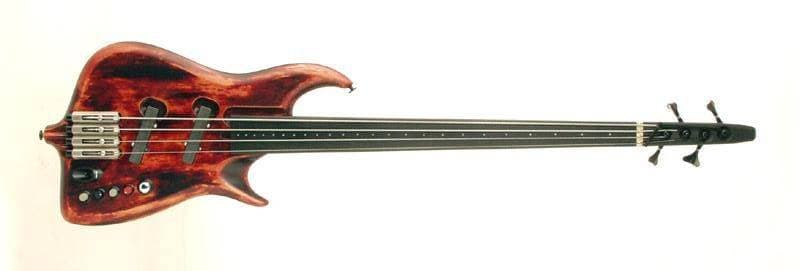

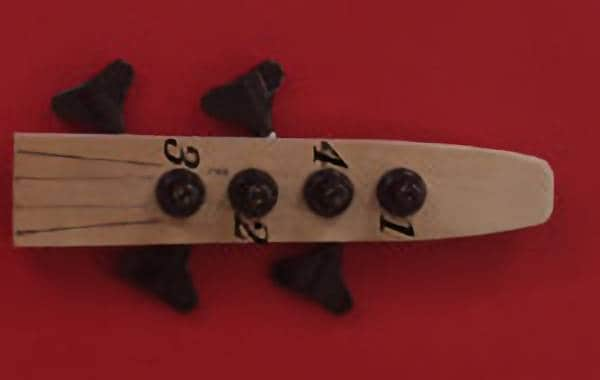
Its neck designs are No.107 Slimeck and No.108 Compact Head. One of the advantages is that you can make two of these necks from the same amount of wood normally required for a Fender-style neck. But with this design, it can be a bit confusing figuring out which tuning post to wrap each string around...
Nemoto:I love the Stealth headstock, but I’ve heard plenty of stories about people getting confused when changing strings. Actually, this design got me thinking about ways to create a more resource-efficient neck. Whether I’ll ever build one myself is another question, though. Stealth was pretty affordable—it was selling for ¥220,000 back when Victoria was going for ¥390,000. Prices have gone up now, but it’s still the cheapest option among Atlansia basses, so you can probably find one for a relatively reasonable price. Maybe I should get a 5-string...
Cheena:I saw a 6-string model going for ¥500,000 on an online store. With a 6-string headstock, the tuning posts are in an L3R3 configuration, so it’s less likely to cause confusion.
By the way, Atlansia tends to disregard design conventions that are standard for other manufacturers when it comes to headstocks. For example:
- When viewed from the front, the strings bend at an angle from the tuning post to the nut.
- String retainers are actively used, even on tremolo-equipped models.
- Headstocks are kept small to reduce weight and material usage.
It’s an unusual approach.
Nemoto:Yeah, their headstock designs really stand out.
Most brands only have two or three different headstock designs, but Atlansia has an absurd number of variations.
Cheena: I guess the reasoning is that each model is given a headstock designed specifically for it—but then again, there are plenty of Atlansia instruments that use headstocks from other models.
Personally, I really like the ultra-compact Jazz Bass-style headstock on the Jupiter, as well as the symmetrically shaped, relatively large headstock of the Pegasus. They just look cool.
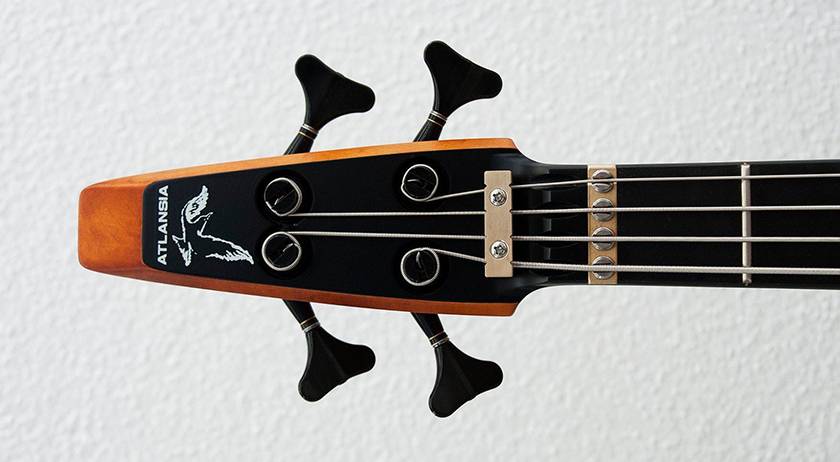
Nemoto:I like the Jupiter, too. But I have to say, I prefer the nail puller-style headstock on the Victoria.
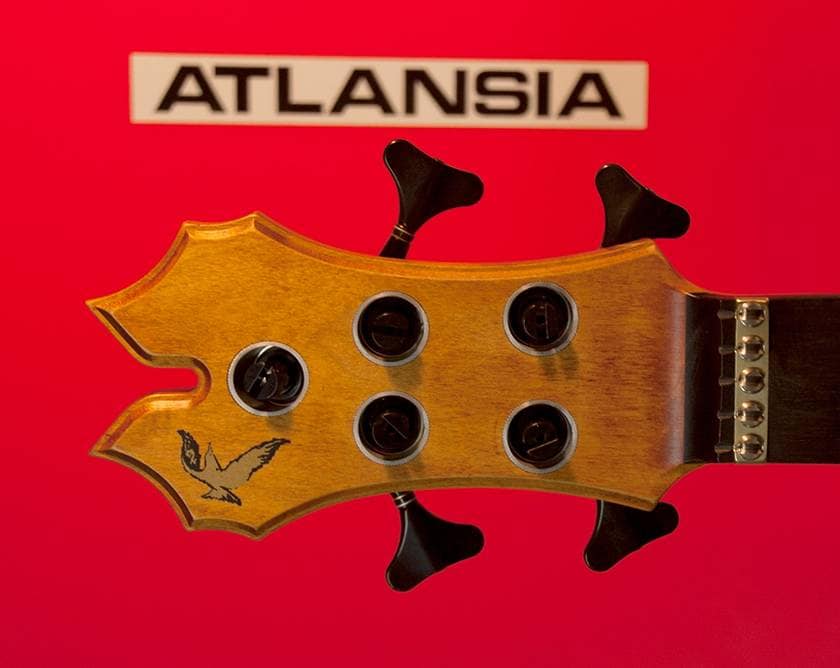
Cheena:Right, it was inspired by a nail puller, wasn’t it? It’s a bit uncharacteristic for Atlansia. I mean, in terms of having a large protrusion on the headstock, it’s kind of similar to scroll headstocks. Combined with its unique shape, it has the elegance of a traditional historical instrument.
What I’m trying to say is—I love it.
Am I just saying I love all of them? Can’t deny it...
Nemoto:When you fall for something, even its flaws become endearing. That’s just how it is...
6 - Atlansia Woodworks
Nemoto:One of Atlansia’s unique features is that they publicly disclose the number of years their wood has been seasoned. That’s actually pretty rare.
Cheena:Their bodies are typically made from wood seasoned for over 12 years (mainly for 2-piece bodies, though sometimes over 6 years, and for Pegasus Guitars specifically, 10 years). The necks are made from Canadian Hard Rock Maple. But honestly, I have no idea who first came up with the term Hard Rock Maple or when...
Nemoto:Hmm... It kind of gives off a Matsumoku vibe, but I can’t say for sure...
Cheena:Well, Atlansia focuses more on cool aesthetics than on avoiding typos. For example, they spell Padouk as Padok.
Speaking of which, we haven’t actually talked about the types of wood Atlansia uses.
Nemoto:In general, they use well-seasoned wood, rarely incorporate figured grain patterns like flame, quilt, or burl, and don’t use much African wood. Very practical and sturdy.
Cheena:They do use Sen (Japanese ash) occasionally. It’s generally soft and lacks durability, but it looks similar to ash, so some other manufacturers use it too.
By the way, Sen is edible—it’s a type of mountain vegetable!
Nemoto:It was commonly used in Japanese instruments in the ’70s and ’80s. I had a Tokai bass back in the day with a Sen body. There are two main types: Onisen and Nukasen, and it’s said that even some 1954 Stratocasters were made from Sen.
The shoots are quite large and filling, but they require extensive lye removal. Worth the effort, though.
Cheena:This is dangerously turning into a mountain vegetable discussion...
Nemoto:But they’re delicious.
Cheena:Thank you for going along with the joke...
Nemoto:Shall we get back to the wood? Another distinctive feature is that they almost never use maple for fingerboards.
Cheena:Right. They mostly use thick rosewood or ebony. Some models have an integrated fingerboard, making it questionable whether you can even call it a separate fingerboard.
The only maple fingerboards I’ve found are on the Stealth, and even then, only on the 4-string and 5-string models. They look bright.
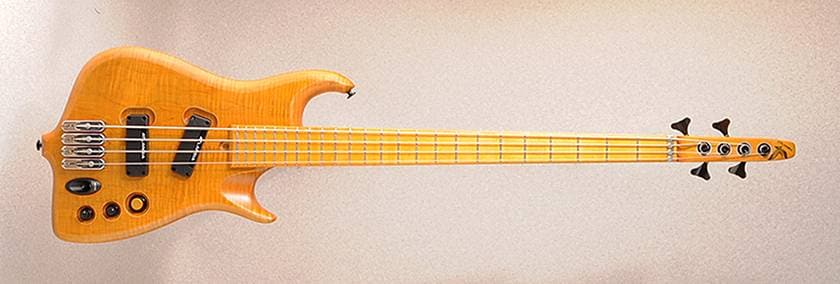
Also, Jacaranda (Brazilian rosewood) only appears on the Galaxy Deluxe, and it’s explicitly labeled as Jacaranda.
Nemoto:I didn’t realize they used Jacaranda. I must’ve missed that.
Cheena:It’s listed as an option alongside ebony, but I’m not sure if they actually produced any. Since it’s written down, I assume they did.
Nemoto:I think they probably did. It’d be a waste to just let the wood sit unused.
But Atlansia’s fingerboards are thick. I wonder if there’s a specific reason for that.
Cheena:Since they frequently reference classical instruments (for example, their conical fingerboard description mentions that it’s common in violins), I think they might be basing their design on double basses. After all, their fingerboards have a 50-100R compound radius.
Plus, a thicker fingerboard means there’s plenty of material to work with if adjustments are needed. That’s probably a secondary advantage, though.
Nemoto:The radius is quite extreme, and double bass fingerboards easily exceed 20mm in thickness, so if that’s their inspiration, it makes sense. If only they used hide glue for the fingerboards—it would’ve been perfect.
Cheena:Well, on fretted instruments, the fingerboard doesn’t wear down, so there’s no need to replace it, meaning hide glue wouldn’t serve much purpose. In Japan’s climate, heat would cause it to melt, humidity would break it down, and mold would rot it away.
As for frets, Atlansia has developed screw-mounted frets, which minimize fingerboard damage when replaced. They make a clear distinction between parts meant to wear out and structural components that should last.
By the way, the neck thickness—including the fingerboard—is said to be around 25mm at the 1st fret and 28mm at the 12th fret.
Nemoto:I once left my viola in a car during summer, and when I opened the case, the neck had come off...
The typical measurements (at least in my experience) are 22mm at the nut and 25mm at the 12th fret, so Atlansia’s necks are thick.
For what it’s worth, my double bass measures 42mm at the 1st fret. That’s thick.
Cheena:Double basses are played differently, so they’re hard to compare. But yeah, in an era where thin and narrow necks are all the rage, fat necks are pretty much exclusive to Atlansia and Wishbass at this point.
Nemoto:As someone who loves fat necks, that’s a bit sad. T.S Factory and Gibson still make relatively fat necks, though.
Cheena:Those tend to be wide but still relatively skinny. Finding one that’s both thick and round is rare... Maybe we should try the Messenger method on an off-the-shelf, wide, thin neck?
*Messenger: A now-defunct American brand known for aluminum through-necks and built-in fuzz circuits. They covered their aluminum necks with wood filler to counteract the cold feel, resulting in a thick, bow-shaped neck.
Nemoto:I had no idea that existed.
Sounds fun, but shaping the filler afterward would be a pain...
Cheena:You just apply a generous amount, let it dry, shave it down, and repeat if you overdo it. Then, finish it with paint.
It might not look great, but Grand Funk Railroad’s guitarist, Mark Farner, loved it. Plus, if you get dents or scratches, as long as they aren’t too deep, you can just patch them up. It’s surprisingly practical—but I’m sure purists would be furious.
Nemoto:If you give it a fancy-sounding system name, most people would accept it. That’s just how people are... unfortunately.
Cheena:Let’s call it a composite neck, using a high-rigidity core material with a machinable outer layer.
Nemoto:Sounds reasonable.
Shall we get back on track?
Cheena:Yeah, I was just thinking that. Though… this article is already over 7,000 words long. Should we wrap it up here for now?
Nemoto:Good idea. Let’s continue next time!
*Image Source: Atlansia Official Website and Facebook.
The “sound & person” column is made up of contributions from you.
For details about contributing, click here.






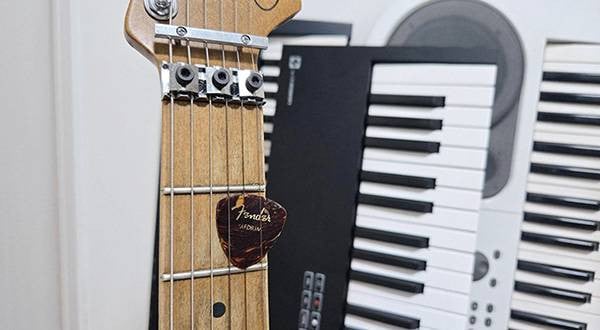
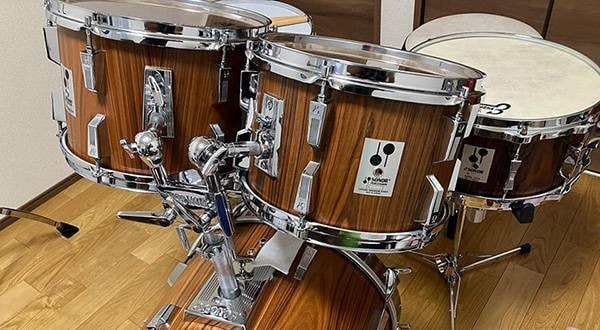
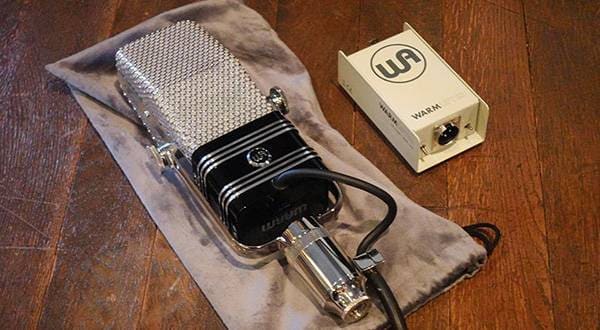
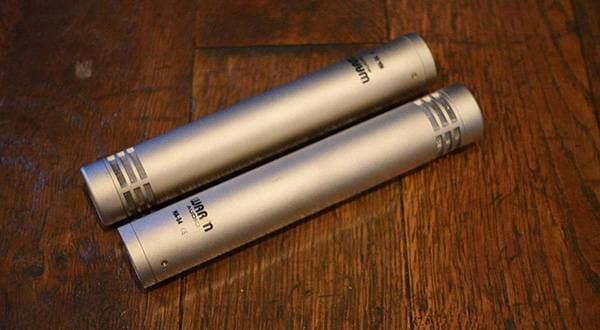

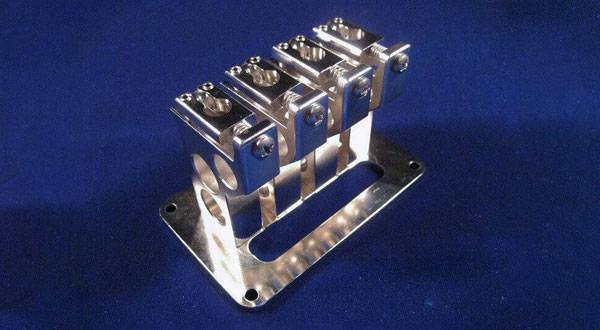
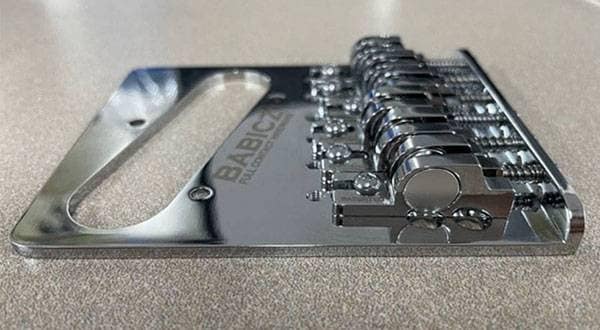
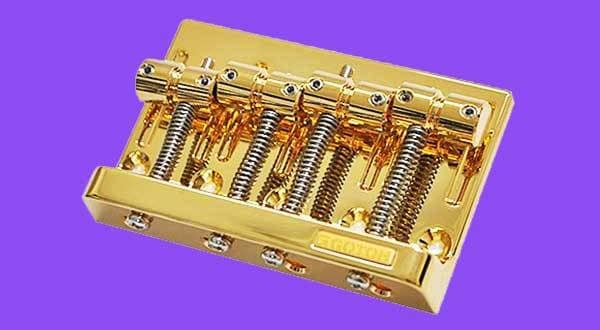
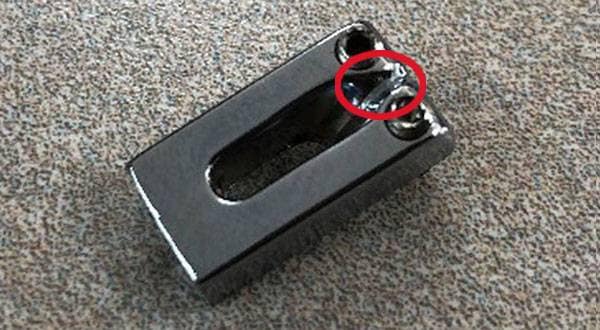
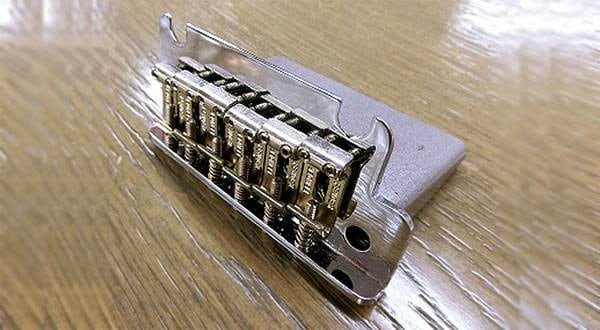
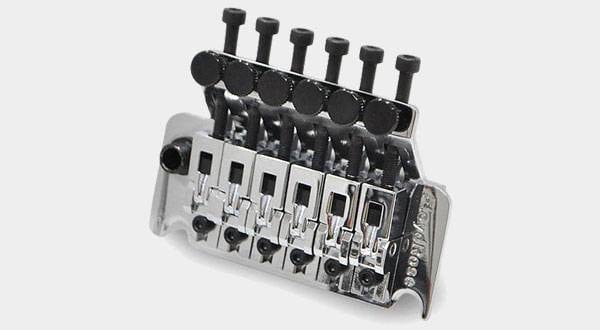
 ギターパーツの沼
ギターパーツの沼
 DIY ギターメンテナンス
DIY ギターメンテナンス
 超オススメのフレーズ道場 ギター
超オススメのフレーズ道場 ギター
 ギター 初心者講座
ギター 初心者講座
 ギター名人ラボ
ギター名人ラボ
 ギタースタートガイド
ギタースタートガイド
